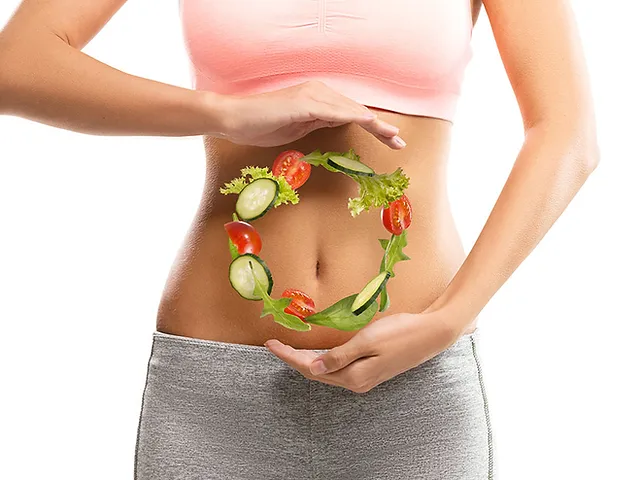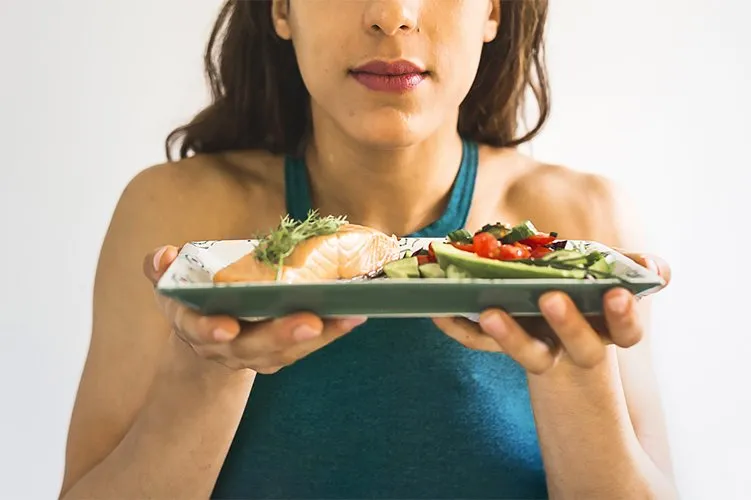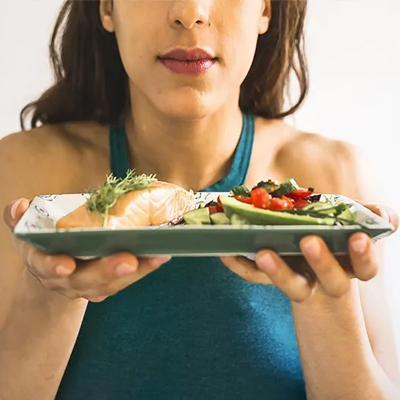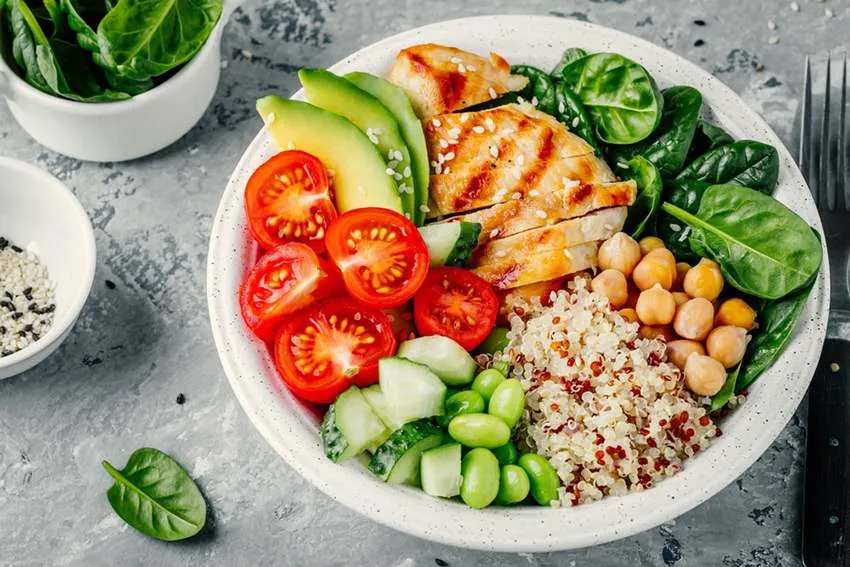On This Page
Best Dietary Guidance for Ulcerative Colitis Patients
Food is one of the three pillars of life that is known as Tryoupstambha. There is a saying by Vaidya Jeevana:
Pathye Sati Gadaarthasaya Kimoushada Nishevanaih |
Pathye Asati Gadaarthasaya Kimoushadha Nishevanaiih ||
If you follow a wholesome diet and regime, then there is no use for medicine and if you don’t follow a wholesome diet and regime then also there is no need for medicine.
So following dos and don’ts i.e. Pathya and Apathya is very important for the proper treatment of diseases.
Pathya (Do’s) and Apathya (Don’ts) for Ulcerative Colitis – As Per Classical Literature
The below-given type dos and don’ts as per Ayurvedic classical literature are beneficial for the patient with Ulcerative colitis. However, all patients are not able to tolerate all food items mentioned in the Ayurvedic diet. So as per individual patient Prakriti, the physician can provide a specific diet plan.
Pathya (Upshya) – Do’s for Ulcerative Colitis (Types of Atisara, Pravahika) – As Per Classical Literature
Ausadha for Atisara Types (UC)
Kalingakadi yoga, Nagaradi Yoga, Mustadi Yoga, Pippalyadi Yoga, Changeri ghrita, Chavyadi ghrita, Daryadi ghrita, Kapitthastaka Churna, Dadimastaka Churna.
Aahara and Vihara for Ulcerative Colitis
Aahara:
- At an appropriate time, when the patient feels hungry, he should be given light food to eat (Laghu Bhojana). This helps the patient to regain their appetite, his Agni gets stimulated, and strength is promoted immediately.
- In the initial stage, depending upon the wholesomeness, the patient should take light food along with buttermilk, Avanti-Soma or Kanji (sour drink), Yavagu (thick gruel), Tarpana (roasted flour of cereals mixed with water), wine, honey.
- Then gradually, the patient should be given Yavagu (thick gruel), Vilepi (a sticky gruel), Khada (a sour appetizer) Yusha (vegetable soup), and boiled rice mixed with meat soup, which is prepared by adding digestive stimulants and astringent drugs.
- If the patient is hungry, he should be given light food to eat. Peya (thin gruel without containing any grains in it) prepared by boiling with appropriate drugs, or fried paddy or roasted-corn flour mixed along with water is also useful for him.
- The Manda (that does not contain Siktaka) can also be taken by the patient.
Vihara:
Vata gets aggravated soon, even by fear (Bhaya) and grief (Shoka), that’s why Vata’s mitigating factors are beneficial and it should be done by providing pleasure & courage to the patient as per the patient’s need.
Pathya (To Be Taken) in Ulcerative Colitis:
- Aja Dugdha (Goat’s milk): In Sushruta Samhita for chronic disease the Aja Dugdha (Goat’s milk) is recommended after boiling it with three parts of water.
- Go Ghrita (Clarified butter of Cow’s milk) & Aushadha Sadhita Go Ghrita (Medicated cow’s clarified butter): Due to Vata Anulomana properties, Go Ghrita or Medicated Ghrita Like Shatavari Ghrita can be used.
- Takra (Buttermilk): Takra helps to maintain microflora in the gut therefore is very beneficial in Ulcerative colitis patients.
- Fruits: Bilwa (Aegle marmelos), Jamun, Raw banana, and Dadima (pomegranate) are beneficial in patients of UC.
- Shuka Dhanya: Shali rice, Shati Rice, Lajja (prepared from rice), Barley.
- Shami Dhanya: Masoor Dal, Moong Dal, Arhara Dal, Rajmaha (kidney disease).
- Go Dugdha (Cow’s milk), Dadhi (curd), Dhanyaka (coriander), Jeeraka (cumin), Sunthi, etc are beneficial for Ulcerative colitis patients.
Apathya (Not To Be Taken) in Ulcerative Colitis:
- Spicy food, green leafy vegetables, Supari (areca nut), Aamra (Mango), Draksha (Grapes), and Sheeta Aahra.
- Mansika Bhava plays a very important role in Ulcerative colitis. So, the patient must avoid Shoka (Grief), Bhava (Fear), etc. Harshana (Pleasing Therapy) and Ashwasana (Sympathy) plays an important role in Ulcerative colitis.
Pathya (Wholesome / Meals To Be Taken) for a Patient of Atisara and Pravahika (Ulcerative Colitis):
Pathya Apathya Vinirnya, Atisara Roga, by “Brahmanand Tripathi”, 46- 52, Bhaishjya Ratnavali 7/ 183- 189
वमन॑ लड्डनं निद्रा पुराणाः शालिषष्टिका: । विलेपी लाजमण्डश्च मसूरतुवरीरस: ।।
शशेणलावहरिणक पिञ्जल भवा रसाः । सर्वे श्लद्रझषा: श्रृंगी खुड्शो मधुरालिका।।
तैल॑ छागघृतक्षीरे दधि तक गवामपि । दधिज॑ वा पयोज॑ वा नवनीत॑ गवाजयो: ।।
नवं रम्भापुष्पफलं क्षौद्रं जम्बुफलानि च । भ्रव्य॑ महादकं विश्व॑ शालूकं च विकड्तम्।।
कपित्थं बकुल बिल्व॑ तिन्दुक॑ दाडिम द्वयं। तालकं कज्चटदलं चांगेरी विजयारुणा ।।
जातीफल॑ च हीवेर॑ जीरक॑ गिरिमल्लिका । कस्तम्बरु महानिम्ब: कषाय: सकलो रस:।।
अन्नपानानि सर्वाणि दीपनानि लघूनि च ।नाभे द्वय अंगुलो अधस्तात्शस्त्रेणार्ध शशांकवत्। दाहो वंशास्थिमूले च प्रथ्यवर्गो अतिसारिणाम् ।।
वमन कराना (यह विलोम चिकित्सा हैं),लंघन कराना (यह संमन चिकित्सा है), दिन में सोना (यह पाचन चिकित्सा है),पुराने शाली धान्यों तथा साँठी धान्यों का श्रयोग,विलेपी ,लाजमण्ड (खीलों को उबालकर इनका मांड पीना), मसूर तथा अरहर की दालों का जूस,खरगोश, काला हिरन,लवा पक्षी, हिरन, कपिज्जल (तीतर, इनके मांस रस, सभी प्रकार की छोटी मछलियाँ, सिंगी मछली, खुड्डीश मछली, मधुरालिका मछली इनका अथवा इनमें से किसी एक का मांस रस,तेल (तिल का), बकरी का घी तथा दूध, गाय का दूध, दही,घी तथा मट्ठा, गाय अथवा बकरी के दूध या दही से निकाला गया नवनीत (मक्खन), केला के वृक्ष के नये फूल, फल, मधु (शहद), जामुन के फल, लिसोढ़ा, अदरख, सोंठ, भसींडा (कमल का कन्द), विकंकत (कंटाई), केथ, मौलासिरी की छाल, कच्चे बेल की गिरी, तेंदू, दोनों दाड़िम (खट्टा छोटा, बड़ा अनार),ताड़ का फल, कंचटदल (जल, चौलाई),लोनियाँ शाक,भॉग मप्जीठ,जायफल,सुगन्धबाला,जीरा,कुरैया की छाल,नेपाली धनियाँ (तिमूर के बीज), बकायन इन सबका क्वाथ अथवा स्वरस, अग्निवर्धक तथा सुपाच्य,सभी प्रकार के आहार तथा पेय पदार्थ,नाभि से दो अंगुल नीचे तथा पृष्ठवंश की हड्डी के मूल भाग में शस्त्र से अर्धचन्द्र के समान दाग देना ये सभी अतिसार रोगियों के लिये पथ्य हैं|
- Vamana (Vomiting), Langana (fasting), and Nidra (sleeping are good for the patient of Atisara).
- The following edibles and meals are helpful for the patient: Old Sali variety of paddy, Sasthi variety of rice, Vilepi (watery rice), Manda of poppy, soups of lentil and pigeon pea, meat soup of rabbit, Ain (a kind of black deer), Lava bird, deer, Kapinjala (partridge), all kinds of small fishes, the Sringi fish, Madhuralika (a kind of fish), medicinal oil, Ghritam and milk obtained from goats and cow, buttermilk, butter, fresh banana fruits, honey (obtained from smaller bees), Jambu phala, dried ginger, common ginger, Kamalakanda, Kapittha, Vikantaka, Bakula, Bilva, Tenduka, Dadima (both ripe and unripe ones), palm fruits, Kañcata leaves, Cangeri, Vijay, Manjistha, Jatiphala, Hrbera, cumin seeds, Girimallika, Kustumburu, Mahänimba, all kinds of stomachic foods, light meals and drinks.
- The point about two fingers below the naval as well as the point around the bottom of the backbone, both should be heated in a crescent shape. This measure also helps one to get a cure for Atisara.
Apathya (Unwholesome / Meals Not To Be Taken) for a Patient of Atisara and Pravahika (Ulcerative Colitis):
Pathya Apathya Vinirnya, Atisara Roga, by “Brahmanand Tripathi”, 57- 59, Bhaishjya Ratnavali 7/ 190- 192
स्वेदो अञ्जन॑ रुधिरमोक्षणमम्बुपानं स्नान॑ व्यवायमपि जागर धूमनस्यम् ।
अभ्यञ्जन सकलवेगविधारणानि रूक्षाण्यसात्प्यमशनं च विरुद्धमन्नरम।।
गोधूममाषयववास्तुककाकमाची निष्पावकन्दमधुशिग्रुरल्तालपूगम् ।
कूष्माण्डतुम्बिबदरं गुर चान्नपान॑ ताम्बूलमिश्वुगुडमद्यमुपोदिका च।।
द्वाक्षाम्लवेतसफलं लशुनं च धात्री दुष्टाम्बु मस्तु गृहवारि च नारिकेलम् ।
सस्नेहनं मृगमदो अखिलपत्रशाक॑ क्षार सराणि सकलानि पुनर्नवा च।।
इवारुक॑ लवणमम्लमपि प्रकोपो वर्गो अतिसारगदपीडितमानवेषु।।
स्वेदन कर्म, अंजन लगाना, रक्तमोक्षण अर्थात् सिरा वेध करना, अधिक जल पीना, अधिक स्नान करना, स्त्री्सगं, रात्रि में जागना, धूमपान करना, नस्य प्रयोग, अभ्यंग (तेल मालिस कराना), अधारणीय (मल, मूत्र आदि के) वेगों को रोकना, रूक्षताकारक तथा अपनी प्रकृति के प्रतिकूल पदार्थों को खाना, विरोधी आहारों को खाना, गेहूँ, माष (उड़द), जौ, इन अन्नों को, बथुआ, मकोय, निष्पाव (भटवांस या लोभिया) की फली, आलू आदि सभी कन्द शाक,मीठा सहिजन, आम,सुपारी, कोहड़ा (पैठा) ,तुम्बी (तुमड़ी या लौकी), बेर, गुरु (देर में पचने वालें) खाने-पीने की वस्तुएँ, ताम्बूल (पान), ईख, गुड़, मद्य (तथा उसके भेद), पोई की पत्तियों का शाक, मुनक्का, अमलबेत का फल, लहसुन, आवलाँ, दूषित जल, दही का पानी, घर में रखा हुआ पुराना हा तेल आदि का भोज्य पदार्थों में प्रयोग, कस्तूरी, सभी प्रकार के पत्रशाक, सभी प्रकार हा सभी सर (दस्तावर) पदार्थ, पुनर्नवा, ककड़ी या खीरा, अधिक नमक, अधिक अम्ल (खट्टे) पदार्थ।
Apathya (Anupashya) – Don’ts for Ulcerative Colitis – As Per Classical Literature
The following measures are harmful to the patient of Atisara: Svedana, use of Anjana, Rakta Mokshana (bloodletting), drinking water in excess quantity, intercourse, Ratrin Jagrana (waking up late hours), smoking, nasal therapy, massaging with Ghritam and oil, Suppression of natural urges and getting angry. The eatables which are to be avoided by the patient include incompatible foods, wheat, Urada, barley, Vastuka leaves, Kakamaci, Nispava Kanda, Madhu, Sigru, mango, betel nut, ash gourd, Badari, foods that are heavy to digest, sugarcane, liquor, Draksa, Amlavetas, garlic pearls, Amalaki, contaminated water (in which are fallen old leaves of many trees), stale water, musk, all kinds of leafy vegetable, Ksara and Yavaksara, and Karkat.
Bhaishjya Ratnavali 7/ 182
A person suffering from Ulcerative colitis (Atisara and Pravahika) should avoid baths, massage, washing along with water, food that is heavy and unctuous, food in excessive quantity, exercise, and exposure to the heat of the fire.
Ulcerative Colitis Diet Guide
Paleo Diet
The Paleo diet is the Prehistoric Human Diet that has been eaten approximately 2. 5 million to 10, 000 years ago i.e during the paleolithic era. The paleolithic diet is also known as the stone age diet, hunter-gatherer diet, or caveman diet.
In this diet, intake of food is obtained by gathering and hunting, like fish, fruits, vegetables, lean meat, etc.
What is the Purpose of the Paleo Diet?
- The purpose of this diet is that the human body is genetically mismatched to modern diet and this mismatch is believed to be the cause of various diseases like obesity, diabetes, ulcerative colitis, etc.
What Can You Eat on the Paleo Diet?
- 30% of your daily calorie intake should be lean meat, especially grass-fed animals.
- Omega- 3- fatty acid-rich fish like Salmon, albacore tuna, etc.
- The oil that is obtained from nuts and fruits like olive oil, walnut oil, etc.
- Fruits
- Vegetables
What to Avoid in the Paleo Diet?
- Various legumes like peanuts, beans, lentils, peas, etc.
- Grains like oats, barley, wheat, etc.
- Refined sugar
- Salt
- Potatoes
- Highly processed food
- Dairy products
Benefits of Paleo Diet in Ulcerative Colitis:
The food items that are mentioned above to avoid Ulcerative colitis are common triggers for a flare of Ulcerative colitis.
How the Paleo Diet is Useful in Ulcerative Colitis?
Dairy Products: Ulcerative colitis has symptoms like diarrhea, gas, abdominal cramping, etc. Avoiding dairy products help us to manage these symptoms along with this dairy intolerance is very common among patients with Ulcerative colitis. In the Paleo diet, dairy products are avoided.
Whole Grains: Whole grain causes gas and increases the stool bulk. So we can say that whole grains flare up the symptoms of Ulcerative colitis along with this worsen the symptoms of proctitis, which is a common condition present in Ulcerative colitis. Eliminating whole grains as per the Paleo diet relieves symptoms of UC.
Legumes: Legumes increase the stool output, and aggravate bowels and gas that are common flares up of UC. In Paleo, diet legumes are the food that is avoided.
Intake of Fish: In the paleo diet various kinds of fish are included. These fishes are rich in omega- 3- acids, anti-oxidants, etc that reduce inflammation, have a protective effect on tissues, encourage healing, and help to achieve a longer period of remission in Ulcerative colitis.
Include Specific Carbohydrates in Diet / Carbohydrate Exclusion Diet
This diet was developed to treat celiac disease but has been promoted for various other gastrointestinal disorders. The idea behind excluding certain carbohydrates from the diet is that certain carbohydrate-rich food is not digested by the intestine and then allows bacteria to grow quickly which results in excess mucus production. This contributes to intestinal symptoms and flare-ups of ulcerative colitis symptoms.
What to Avoid in a Carbohydrate Exclusion Diet?
- All refined and processed food
- Soya
- Lactose rich product
- Certain vegetables like okra, corn, potatoes
- Chocolate
- Corn syrup
- Processed meat
What Can You Eat On A Carbohydrate Exclusion Diet?
- Certain dairy products that are low in lactose sugar
- Nuts and nut flour
- Fruits
- Vegetables
- Lean meat
- Eggs
Avoid Food that Triggers or Flares Up the Symptoms of Ulcerative Colitis
- Insoluble fiber food: Exclude insoluble fiber food from the diet as they are very hard to digest like cruciferous vegetables eg. Broccoli, cauliflower, other raw green vegetables, fruits with seed and skin, whole grains, whole nuts, etc.
- Sugary foods: Avoid all kinds of sugary food like pastries, canned juice, candies, etc.
- Non- absorbable sugar: Avoid certain types of fruits and juices like prunes, peaches, pears, etc. Sorbitol, mannitol alcohols that are found in candies, ice- creams, etc.
- Spicy food: Avoid spicy food, pickles, etc.
- Alcohol and caffeinated drinks: Avoid wine, beer, liquor, soda, etc.
- Avoid high-fat foods like coconut, and butter, as well as greasy food, fatty, fried food.
Semi-Vegetarian Diet
This diet is very famous in Japan and is given to hospitalized patients with ulcerative colitis. In this diet, the patient is given egg, yogurt, vegetables, legumes, rice, and fruits on a daily basis along with a glass of milk and green tea occasionally. In this diet, animal protein is limited i.e., fish once a week and meat once in two weeks. A research study suggested that a semi-vegetarian diet was less likely to relapse into a flare condition of ulcerative colitis.
Gluten-Free Diet
Gluten is a type of protein that is mainly found in rye, barley, wheat, and triticale (a cross hybrid between wheat and rye). A gluten-free diet means, excluding the diet that contains gluten.
What You Can Include in Your Diet?
Vegetables: Green leafy vegetables, all types of gourds like snake gourd, ivy gourd, bottle gourd, bitter gourds, Indian round gourd (Tinda), etc, lady finger, etc.
Fruits: Banana, Grape, Mosambi, Blackberry, blueberry, Cranberry, Cherry, Papaya, Citrus fruits.
Cereals: Oats, Bajra, Ragi, Rice.
Pulses: Beans like kidney, pinto, back eyes, French, cluster beans, etc, Red gram, Green gram.
What to Avoid:
- Wheat
- Barley
- Rye
- Oats in a few cases
- Triticale.
Avoid Food that is Rich in Linoleic Acid
Linoleic acid is a poly-unsaturated fatty acid, or it is also known as polyunsaturated omega- 6 fatty acid. A recent study published in a journal revealed that intake of a diet high in linoleic acid doubles the risk of developing Ulcerative colitis.
When we take a diet rich in linoleic acid, during digestion it transforms and incorporates in the colon i.e., in the membranes of the cells of the colon which provide the source for pro-inflammatory molecules that predispose patients to ulcerative colitis.
Source of Linoleic Acid
- Chicken
- Various vegetable oils like safflower oil, corn oil, soybean oil, etc. Safflower oil contains 75 % of fatty acid i.e., linoleic acid. In Soybean and corn oil linoleic acid is approximately 55- 60%.
- Grain-based desserts
- Salad dressing
- Certain nuts
- Pizza
- Corn chips
- Processed meat
- French fries
Follow a Low FODMAP Diet
FODMAP stands for fermentable oligosaccharides, disaccharides, monosaccharides, and polyols. FODMAP is a carbohydrate that is difficult to digest as they pull more water to the bowel and increase bloating, gas, pain, diarrhea, etc. Intake of a low FODMAP diet may decrease your symptoms associated with IBS.
Food that is Low in FODMAP are:
- Eggs
- Meat
- Rice
- Quinoa
- Fruits like blueberries, grapes, strawberries, oranges, etc.
- Vegetables like eggplant, green beans, pumpkin, carrot, zucchini, etc.
Avoid:
- Fruits like Mango, plum, apple, watermelon, and peach.
- Vegetables, like broccoli, onion, asparagus, and artichokes.
- High fructose corn syrup.
- Legumes like lentils, kidney beans, chickpeas
- Lactose should also be avoided if you are lactose intolerant.

Have A Health Issue?
Consult Online
- Dr. Sahil Gupta (B.A.M.S., M.H.A.)
Ayurvedic Allergy Specialist
CEO & Founder of IAFA®
Ayurvedic Reference of Diet in Ulcerative colitis

Was this Page Helpful?
Read More Articles
-
-

Irritable Bowel Syndrome (IBS)
Learn the best dietary guidance for Irritable Bowel Syndrome (IBS) patients. IBS…
-









